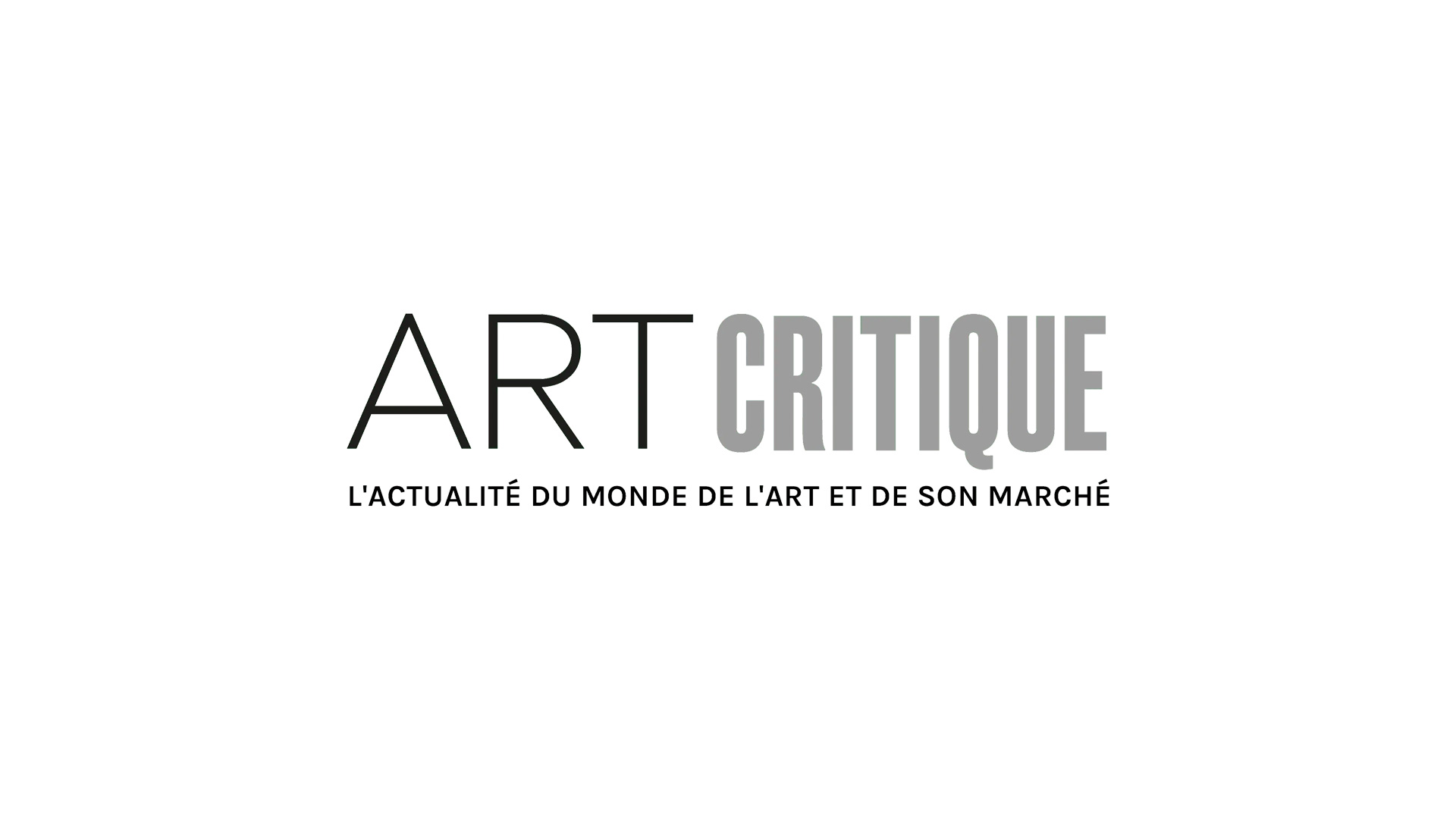The arrival of spring is also promising for artists. On Thursday April 4 at Gallery Bigaignon (Passage de Retz, 9 rue Charlot) Henri Foucault opened an exhibition featuring some new pieces that reveal the presence of some particularly exceptional work on the French scene. Foucault examines sculpture as created by using photographic material. During the 20th century, Constantin Brancusi was probably most responsible for establishing the link between the disciplines of sculpture and photography.
Unless involved in developing or printing (as in analogue photography), taking photographs doesn’t require much use of one’s hands. With Foucault, bodies lie on long, still unused sheets of photographic paper. Using traces of shadow and light that result from exposing objects on such paper (called photograms), Foucault focused on rebuilding the model and the volume. That process is the opposite of sculpting, which involves removing material, Foucault added crystals (glued) and pins (pressed) that make up the shot’s entire space, respecting the body’s contours but humorously recreating the sharpness of the skin’s’ surface. What shines, scintillates or mirrors, offers varying corporal volume, pitfalls to light, thwarted by crystalline variations, shivers of brilliance, so many palpitation of the skin rediscovered because of the light.

For a dozen years now Henri Foucault has been using a modern iconography whose movements come from fashion shows and fashion photography – swaying, stretching, leaps caught in mid-air, excesses of all kinds and he unexpectedly rediscovers symbolist patterns downplayed in 20th century: weightless hair and body, patterns and virtuosity in the treatment of moiré materials and silky feminine adornments staged by “worldly” painters. By using material taken from (high) fashion (Swarovksi crystal, silvery jewellery), Henri Foucault establishes a sometimes ironic and critical dialogue between art and fashion, a dialogue indicative of times of crisis. And isn’t the obsession with luxury a characteristic of the first 15 years of the 21st century?

As a sculptural object, the body is never fixed in Foucault’s sculpted and photographic images. It is duplicated, fragmented, almost erased, reduced to its contour or to a splash of light, adorned by the shiny pins that provide an endless reflection. Henri Foucault had found the perfect material in the body – without literally moulding it – to keep it in a vibratory suspense that made its surface fluctuate between level and relief. A “vibratory disappearance” (Mallarmé).
In Paris, the Cinémathèque Française is showing an exhibition that reveals Picasso’s influence on Fellini. Some people have grown weary of the onslaught of exhibitions dedicated to Picasso recently. The Cinémathèque Française’s contribution, however, is an example of indisputable originality, even if its legitimacy only comes from an unreciprocated iconographic analogy.
Fellini’s obsession with Picasso is easily ascertained from in his now famous Livre de mes rêves (Flammarion, 2010) and during certain interviews. An initial version of the exhibition was first held at the Picasso Museum in Malaga which somewhat “mechanically” presented grotesque influences of the Italian to the metamorphic excessiveness of the Spaniard. Except for these shows of admiration from the director of films such as La Strada and Armarcord, few examples justify attempting to compare these two artists. But we know well that, in the words of Pierre Reverdy (1914, Nord-Sud), the appropriateness of bringing images closer together largely depends on how far apart they are. Audrey Norcia and the Cinémathèque Française’s curator of exhibitions, Mathieu Orléan, have successfully achieved an exhibition in film that is believable.

Some of the Felliniesque inspiration, even if it is not often apparent until the end of each of the films, undeniably draws on the imaginative magnitude of a painter gifted with an innate talent for bodily deformation. The Parisian version of the exhibition seems to give (if memory serves correctly) a greater importance to the common fascination the two artists had for antiquity. That’s probably why the convergence of these two imaginations from the past is so striking. Indeed, it had previously not been possible to see the “clear line” of Picasso, at work in scenes of erotic seduction repeatedly drawn on the back of antique mirrors, was quite comparable with the pure and delicate beauty of the young actors playing the heroes of Satyricon. Finally, the exhibition is very well paced by a scenography interspersing the different themes with subtle variations in light.
The two artists were profoundly fascinated by the circus and had no fear of portraying themselves as clowns. This final comparison is probably the easiest to grasp but hadn’t previously been illustrated. If photographs revealing the filming process are often disappointing when featured in cinematic exhibitions (such as Kubrick’s), this exhibition, on the other hand, gives viewers the opportunity to contemplate the Italian director’s exceptional gesturality.

And Fellini dreamed of Picasso is also a chapter in the history of the Cinémathèque Française, as the combined artistic pieces are exceptional in quality and number. Langlois did not hesitate borrowing paintings from Fernand Léger, Gino Severini and Marcel Duchamp, during his installation in 1963 at the Palais de Chaillot, a few hundred metres away from the Museum of Modern Art. Fifteen years ago, the Renoir exhibition, bringing together Auguste and Jean, opened the Cinémathèque Fran֛çaise’s current rue de Bercy installation. The recent exhibitions dedicated to Antonioni and Henri Langlois made it possible to borrow pieces by Rothko, Picabia and Matisse among other masters of the 20th century. It seems, however, that the public cannot yet really accept that the institution that best embodies cinematographic tradition can compare it to the real masterpieces of modern art heralded by Picasso. The Cinémathèque Française really is showing original major pieces by Picasso (stored at Malaga) in conjunction and in communication with Federico Fellini’s films! Will the day ever arrive when the general public will no longer doubt the virtues of travelling between disciplines and will not assume that Picasso’s work are not reproduced when it comes to comparing them to cinematographic works, the photographic or digital entities referred to as copies?






